Why employee storytelling is business critical in 2023
1 hour
Resources > Reports & eBooks > Employee Engagement
In this report, we met with experts from comms, consulting, HR, and employer brand spaces to understand the challenges they were facing day to day. We explore the current state of employee engagement, including why it is business-critical in times of change, 5 top tips to drive it and how to retain employees through budget cuts.
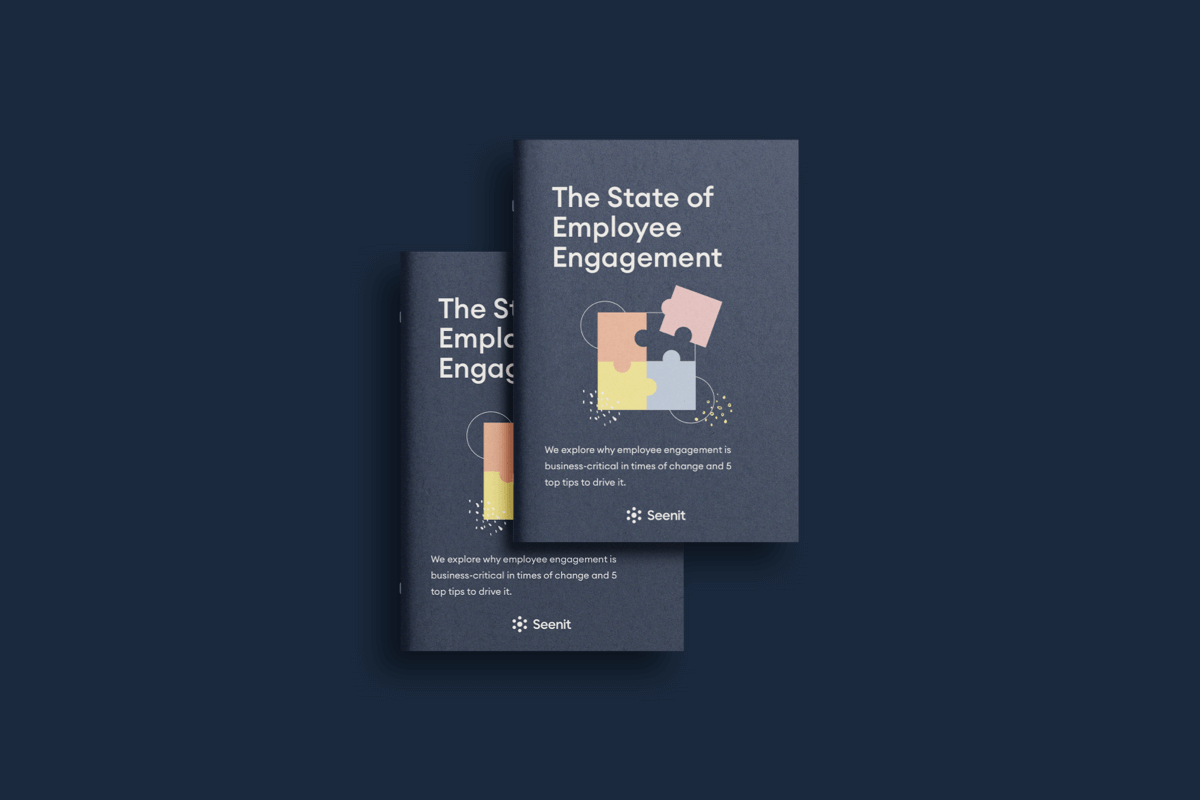

Alex Her
Employer Brand Manager at Go-Daddy

Lizzie Barrett
Group Brand Strategy Director at Symphony Talent

Lucy Powell
Communication and Engagement Consultant at Liba Consulting

Yasar Ahmad
Global VP Talent at Hello Fresh

Elisa Bassani
Senior People & Operations Manager at Seenit

Emily Forbes
CEO and Founder at Seenit
You’ve most likely noticed the relationship between companies and employees has evolved throughout your career.
In the past few years only, the talent revolution, the great resignation and most recently quiet quitting have dominated conversations.
All these shifts in workplace culture and expectations can be tied to one common theme: employee engagement.
It’s no secret 2020 threw the global population a few curve balls, swiftly followed by two years of uncertainty. And now, as 2023 approaches, a recession is upon us. This not only poses an economic challenge for businesses worldwide, from budget cuts to redundancies, but deeper within organisations, employees will be the ones absorbing the biggest hits.
In this report, we’ll look into why employee engagement is more vital than ever in these times of change — reframing the latest employer brand, HR and internal comms ever-shifting priorities.
We combined our experience, working with customers from Amazon and Walgreens to Trustpilot and Vodafone, with knowledge from thought leaders in the industry to share our community’s thoughts on The State of Employee Engagement in 2023.
So, if you’re facing hiring, attrition or retention challenges, read on to get ahead of the curve and prepare for the challenges ahead.
Emily Forbes, Founder, Seenit
We hear the word engagement thrown around like a buzzword, but what does it really mean for an employee to be engaged?
Definition: Simply put, employee engagement refers to the emotional attachment between an employee and their company.
From a business’ perspective, employee engagement means constantly striving to improve work to keep employees connected to the company, their peers, and the common goals.
“It’s a contribution towards a shared mission or purpose. It’s being valued and recognised for that contribution. That’s the bottom line of employee engagement.”
You’ll hear people use employee engagement as an umbrella term. But ‘engagement’ is often used interchangeably with others, like satisfaction, recognition, happiness, and advocacy.
Let’s reframe so we’re all on the same page.
How do you distil employee engagement into a single graphic? Breaking down something so complex into a sole visual can be tricky. We began with a pyramid model.
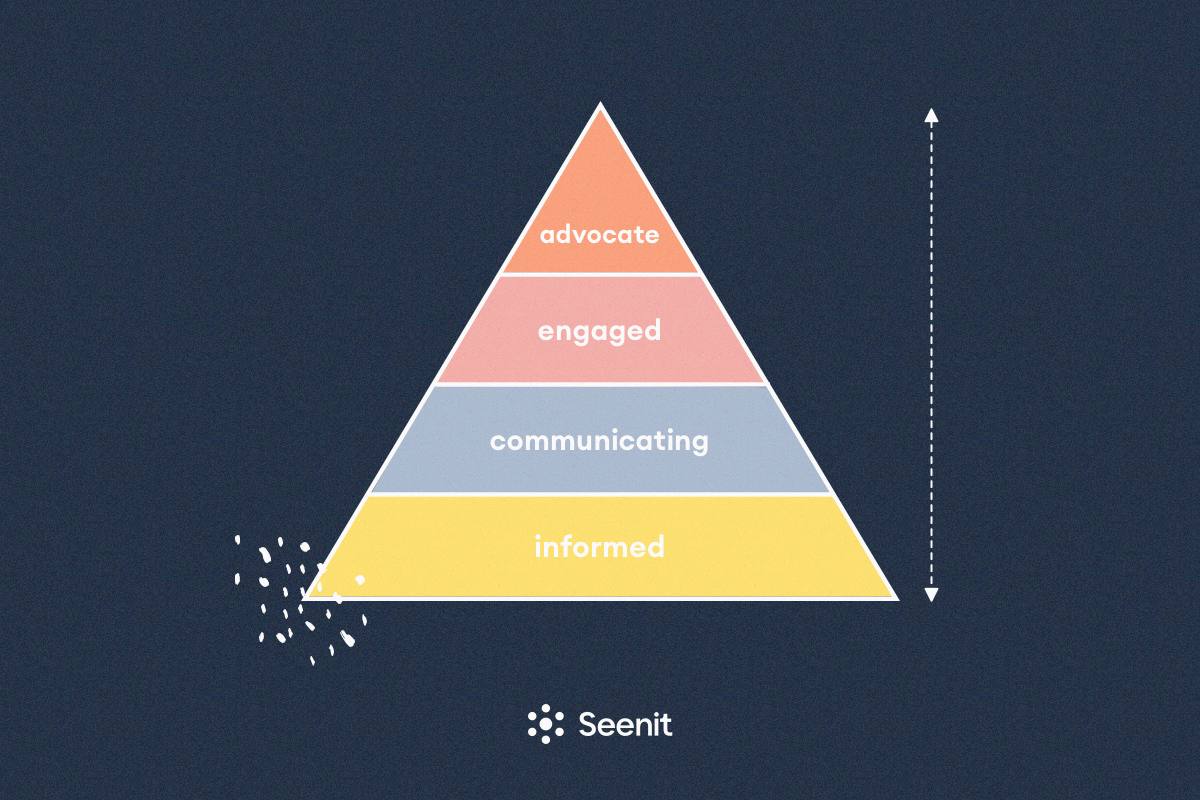
It all starts with an employee. They are the core of your business.
At the beginning of the pyramid level, informed employees know your organisation’s purpose, values, and mission.
The next stage is communicating. Employees start to share back with you, forming a relationship based on trust and mutual benefit.
Higher up is where we find engagement and beyond that advocacy.
Engagement is not linear. Advocates may one day become disengaged and move back to the start of the pyramid over time.
“Employees need clarity. They need reassurance, they need strong leadership”.
A pyramid model is a great place to start, but if we agree that engagement is not linear, why should we represent it that way?
In the pyramid model, employees moved linearly up and down from one stage to another. With the Venn diagram, we’ve taken things a step further.
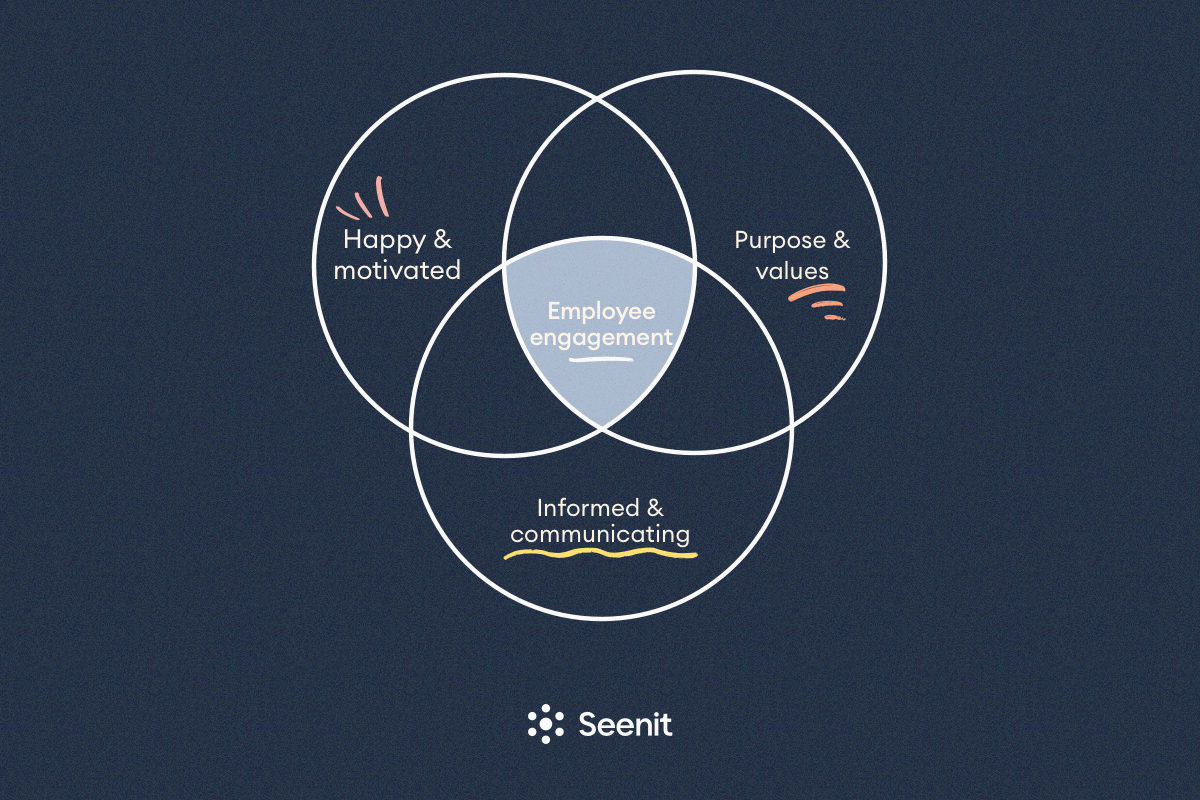
We feel that for an employee to be truly engaged, they need three things.
When staff feel unhappy, frustrated, or unmotivated, they are more likely to look for a job elsewhere. For the company they leave behind, recruiting new staff, training them, and waiting for them to reach total productivity all come at a considerable cost.
We believe that purpose is key to the survival of businesses globally. For companies to attract, retain, and engage their people, they must have a clear and lived purpose that sits at the organisation’s heart. This purpose must be weaved through the organisational tapestry, defining your vision, mission, and values.
Without a clear purpose, businesses will struggle to keep hold of their people. We found that 75% of employees say caring about their company’s mission makes them more engaged with their role.
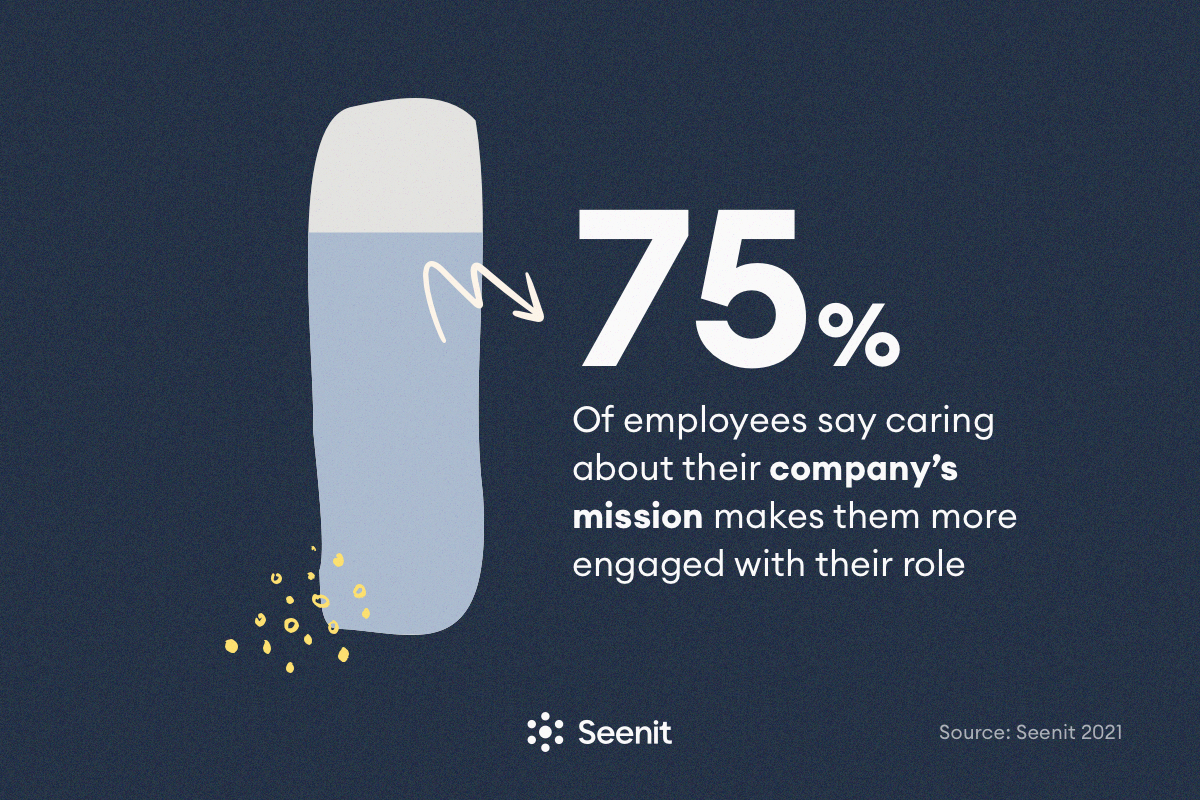
A regular two-way flow of communication with your employees is an integral element of employee engagement. While it helps ensure employees can fulfil their tasks more effectively, it also helps remind employees of the importance and value of their role within the organisation.
Employees could completely understand and align with your business’ purpose and values but still be disengaged. Moving our thinking away from traditional linear models changes our thinking and approach. We must treat engagement holistically and seek to improve across all business areas to impact engagement.
Now that we know what we’re talking about, let’s look at who’s in charge.
Across the board, employee engagement seems to get passed around from team to team. And there isn’t one right way to go about it.
All business functions, from talent and HR, to comms or employer brand, focus on employee engagement to some degree. Every department has a stake in it, and each team has different KPIs (Key Performance Indicators) and reasons why employee engagement matters to them.
In an ideal world, employee engagement should be its own team, whether alone or under an employer branding function. Unfortunately, only some businesses have such a luxury. Employee engagement is often disregarded, confused with employee satisfaction, and rarely considered business critical.
We disagree, and here’s why.
“Employee engagement has to be seen as business critical. Instead of a good to have, because it would be nice for your employees to be engaged. They’ll soon be business critical once they leave.”
Well-being links directly to an employee’s productivity. Disengaged employees are unlikely to be working at their best. Employee well-being can lead to a productivity increase of up to 23%, giving a clear return on investment for employee engagement.
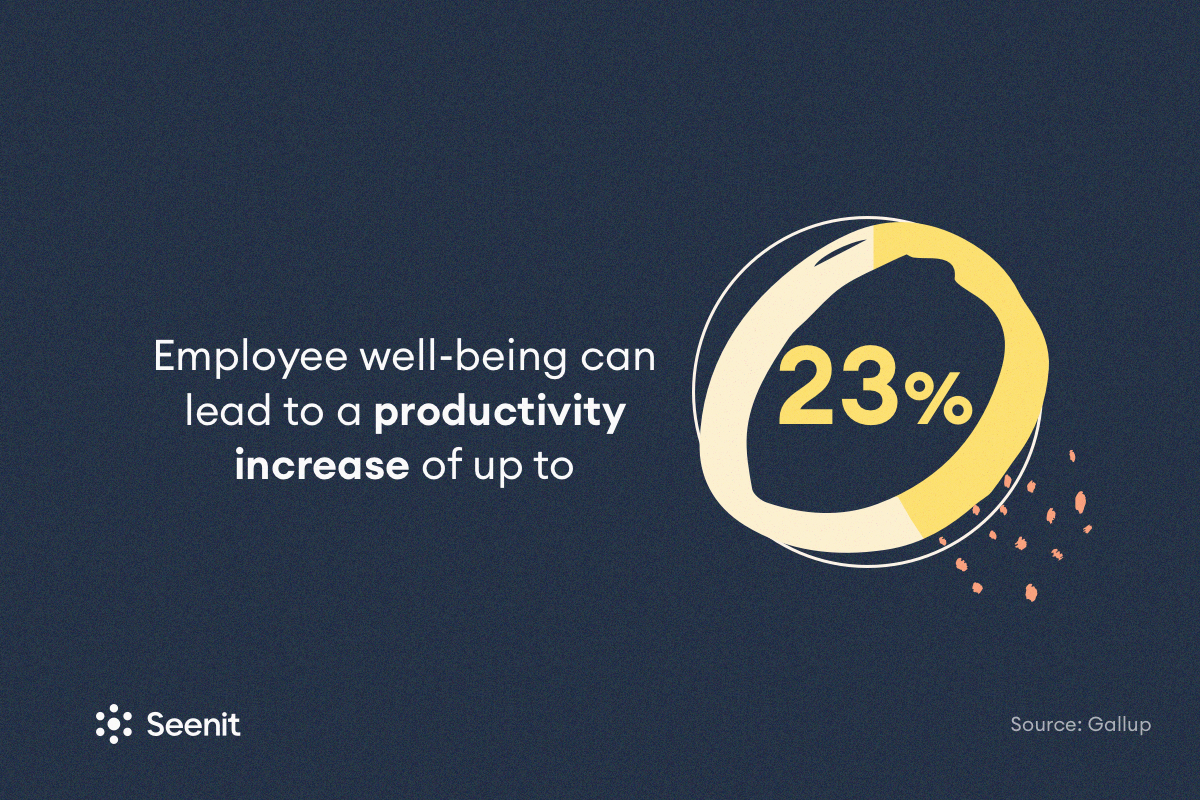
Engagement is an employee’s emotional connection and sense of commitment to a company. In contrast, motivation is the energy an employee has to act on that feeling. 30% of productivity can be influenced purely by motivation, which spans from engagement.
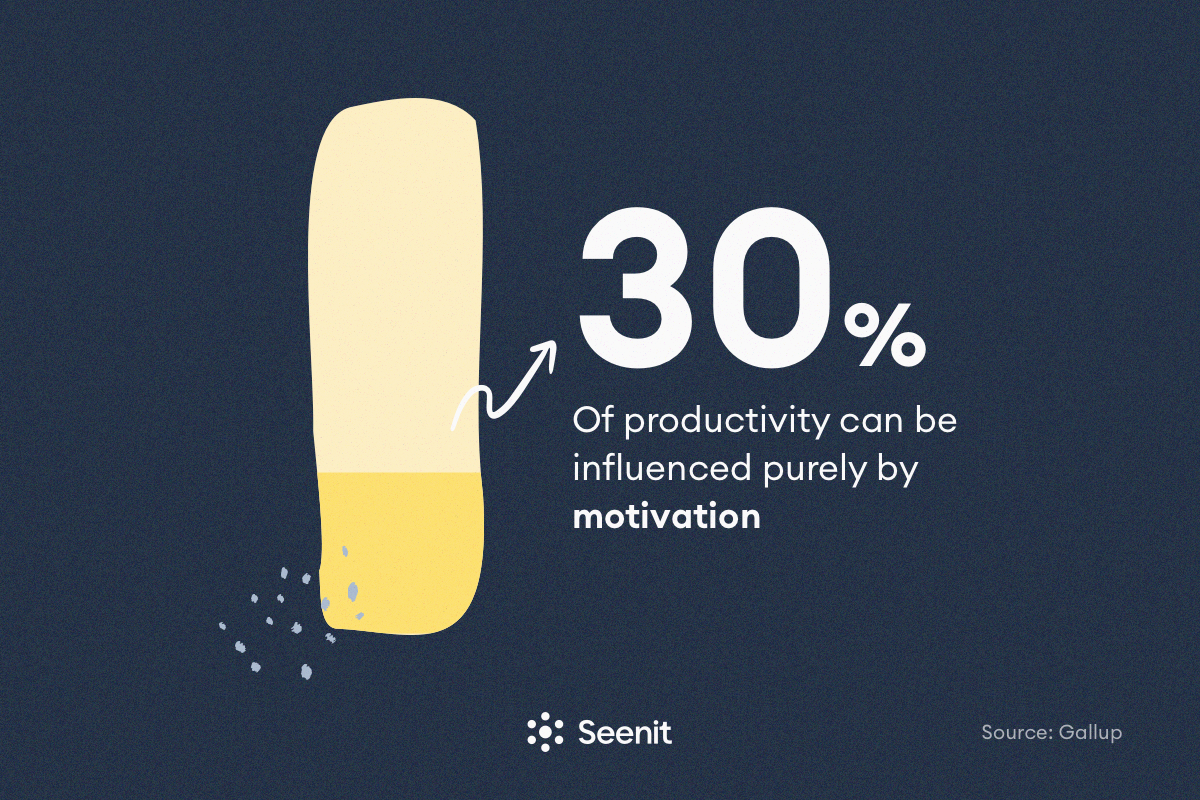
As we stated previously, unhappy employees are more likely to look for a job elsewhere. For the company they leave behind, recruiting new staff, training them, and waiting for them to reach full productivity comes at a considerable cost. Employee turnover can also affect morale across the rest of the team.
When your team is more engaged, it affects performance and customer service delivery. This can lead to a 20% boost in sales, a 10% rise in customer ratings, and improved customer loyalty and retention. Simply put, engaged employees care much more about their work and their customers.
Employer brand teams are just some of the ones benefiting from employee contributions to projects. Companies that can count on engaged employees to provide content and partner with them will be more trustworthy to customers. Without them, companies may resort to fake testimonials, stock models, and an inauthentic employer brand because they’re not getting that buy-in from employees.
People don’t trust brands. People trust people, whether customer-facing or not; employees are the brand and the brand’s reputation.
From an employer branding perspective, employees can be storytellers. They’ll advocate for the business; eventually, the cost per hire will go down, and the quality of employment will go up. It’s up to you to encourage them to advocate for your business publicly.
If employees are unhappy or disengaged, they will not refer someone else. The same can be said for advocacy. You want your employees to be in your corner and genuinely represent the company.
Since employee engagement leads to higher productivity, motivation, retention, customer trust and advocacy, it’s no surprise that engagement impacts the bottom line.
So much so that engagement workforces can make companies up to 22% more profitable.
“With engaged employees, how can you not have happier customers? How can you not make more money?”
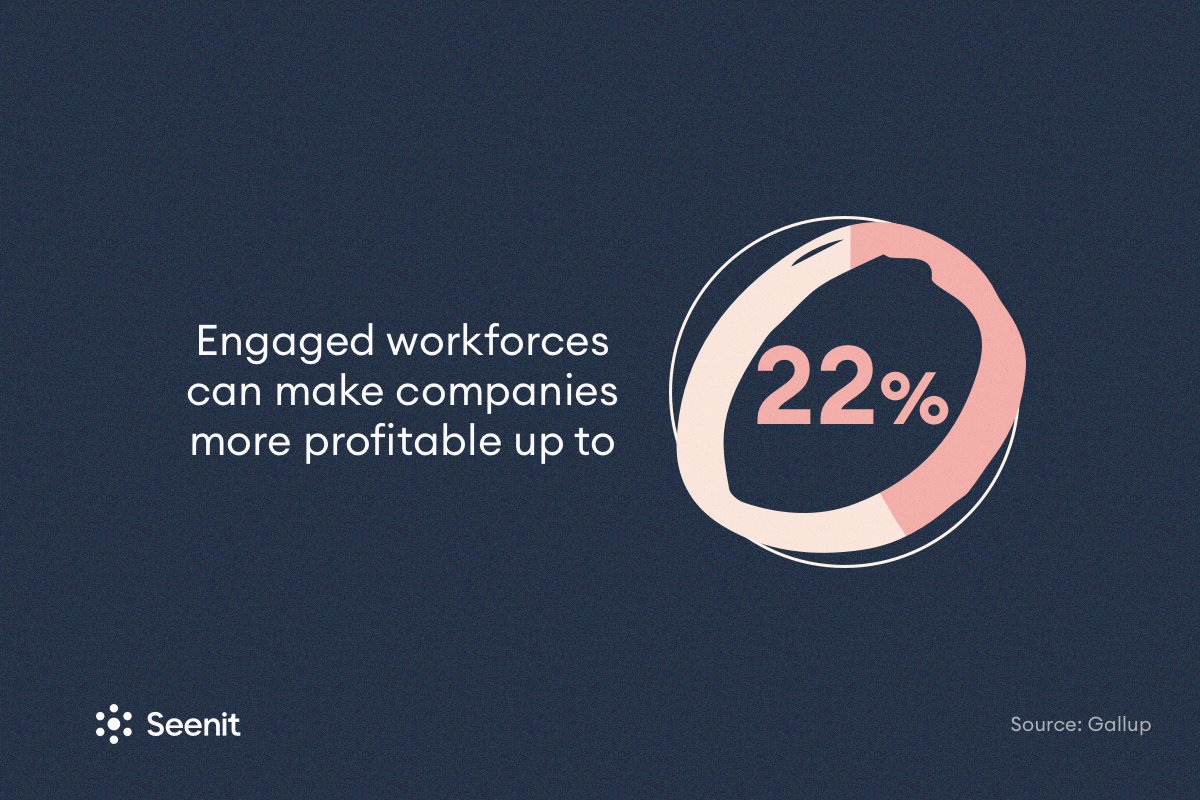
So far, we’ve covered what employee engagement is and what the benefits are. Now, we will look at the most common challenges of employee engagement. As a reminder, we pulled the following statistics from our previous report, The Talent Revolution 2022.
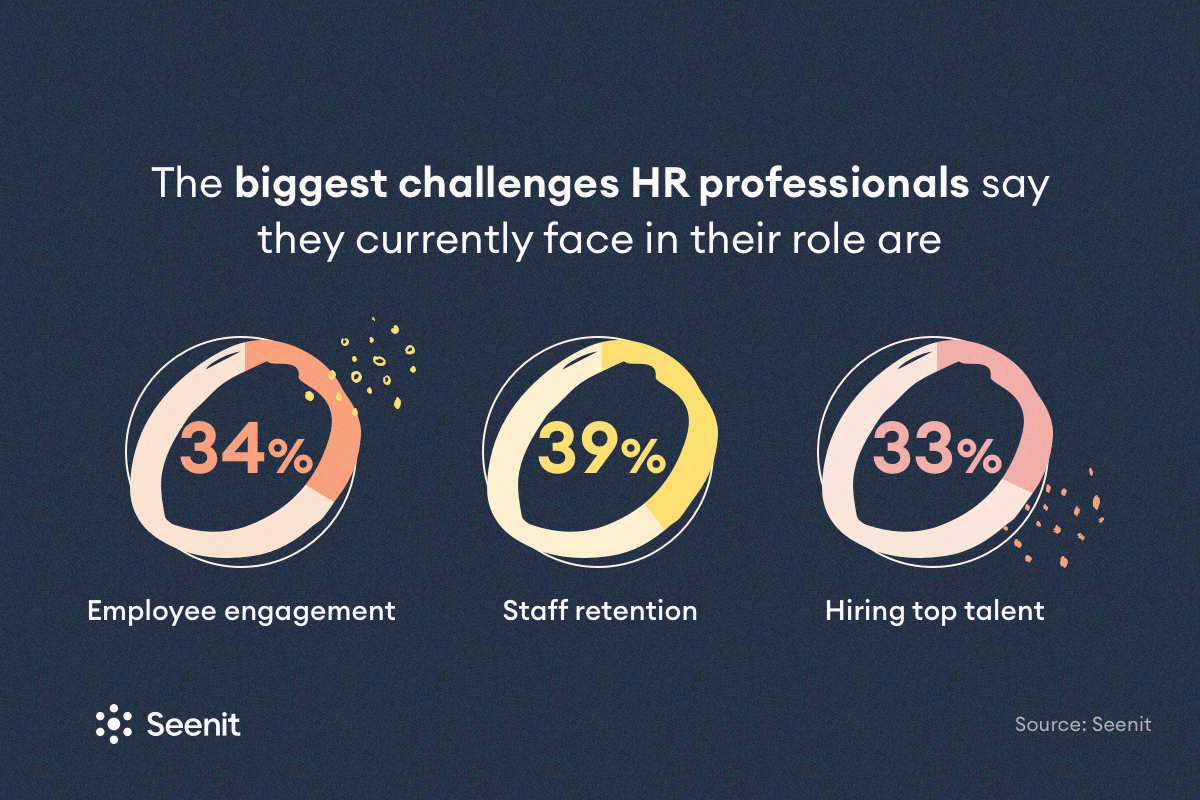
We chatted to experts from the HR, comms, consulting, and Employer Brand spaces about the challenges they are seeing.
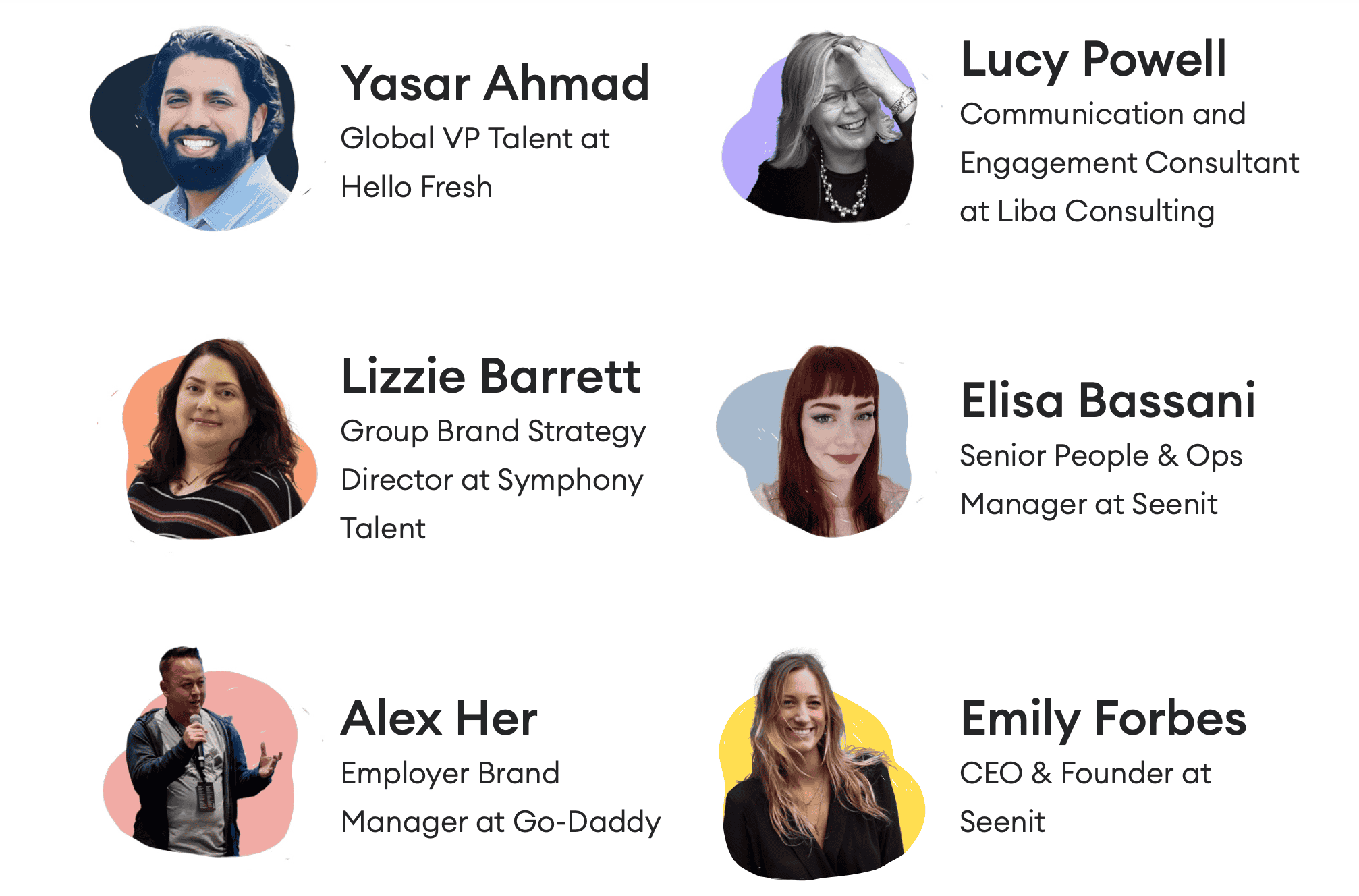
The following three kept coming up.
Yasar: The more employees work from home to manage work-life stress, the more they work. They may work and find themselves being more stressed. Hybrid is not the best of both worlds.
Alex: A lot of companies are suddenly, after restrictions are being taken away from the pandemic, saying, ‘okay, come back to the office’, and you're losing people by doing that.
Lucy: What we’re now seeing post-pandemic, with people working from home, is social structures are damaged.
Elisa: It may be controversial, but it would be easier to bring back more people to the office because people are happy together. If there’s a great atmosphere, people want to be there.
Lucy: What COVID has done to engagement is starting to really worry me.
A lot of companies have not gone back to the office, some for good reasons, some not. We are becoming relatively immune to the idea that we need social connections, relationships, and structures in our workplace.
I think we will find that working from home will prove a block in engagement and engaged performance. I am genuinely worried about it. I hope I’m wrong.
Yasar: You have this concept of quiet quitting, right? We’re seeing people doing this. The whole: ‘I’m engaging in a bare minimum way’.
Lizzie: There’s been that phrase around ‘quiet quitting’ recently that’s been driving me slightly up the wall. I’m sorry, but doing your job and only your job is not quiet quitting. That’s doing your job.
Alex: You could want every single person who is not quiet quitting, who is super engaged to participate, and then that leads to ultimate engagement. But the reality is some people are just satisfied with their job. They say: I’m an introvert, I don’t want to be involved in video, I don’t want to post on social media, but I like working here, and that’s someone who is ‘quiet quitting’. But they’re comfortable just doing the bare minimum, and it doesn’t mean they hate the company; they’re just quiet.
Are they quitting? They’re still helping you out, helping you run your company. They’re just not people who will go above and beyond with their work.
Lucy: I have been at places where quitting became a challenge, but employees were just quitting, they were not being quiet about it.
Lizzie: I’ve seen people who are literally just doing their job, getting on, going home. And I’ve seen people who have not been doing their job or not doing their job to a certain standard that you might expect and go home not caring. That last one is the one that is worrying.
Yasar: Diversity and inclusion is such a broad topic. There’s also equity within that right now on gender. You should aim to clearly understand where you have minorities, identify them, and make an impact. You want to clearly understand where the system, people, or biases exist so that you can challenge those and create a truly unique, diverse environment.
Lizzie: Everyone talks about diversity and inclusion from the business point of view. It’s much better for businesses because you get more knowledge to get your diverse customer base to reflect that. But no one talks about diversity, inclusion and employee engagement. There has to be an explanation to employees about what working in an engaged atmosphere means and what it gives you.
Alex: The biggest thing for us at Go-daddy is our tagline: ‘You belong here’. You belong here regardless of where you live, your skin colour, your sexual orientation, or where you want to work. You should support employees to support you because you’re helping them as a person.
We’ve identified the lay of the land and called out the main challenges of employee engagement. But how do you impact employee engagement? Let’s take a look at 5 key tips to drive engagement.
We can talk about employee engagement all day long and how to improve it. But you can’t always unbreak what’s broken. Instead, focus on your strategy to keep people engaged from the beginning. Remember that engagement will flow and fluctuate throughout an employee’s career.
Most engagement surveys show employees start off very engaged and slowly lose their spark within 2 years. However, it does go back after 10 years.
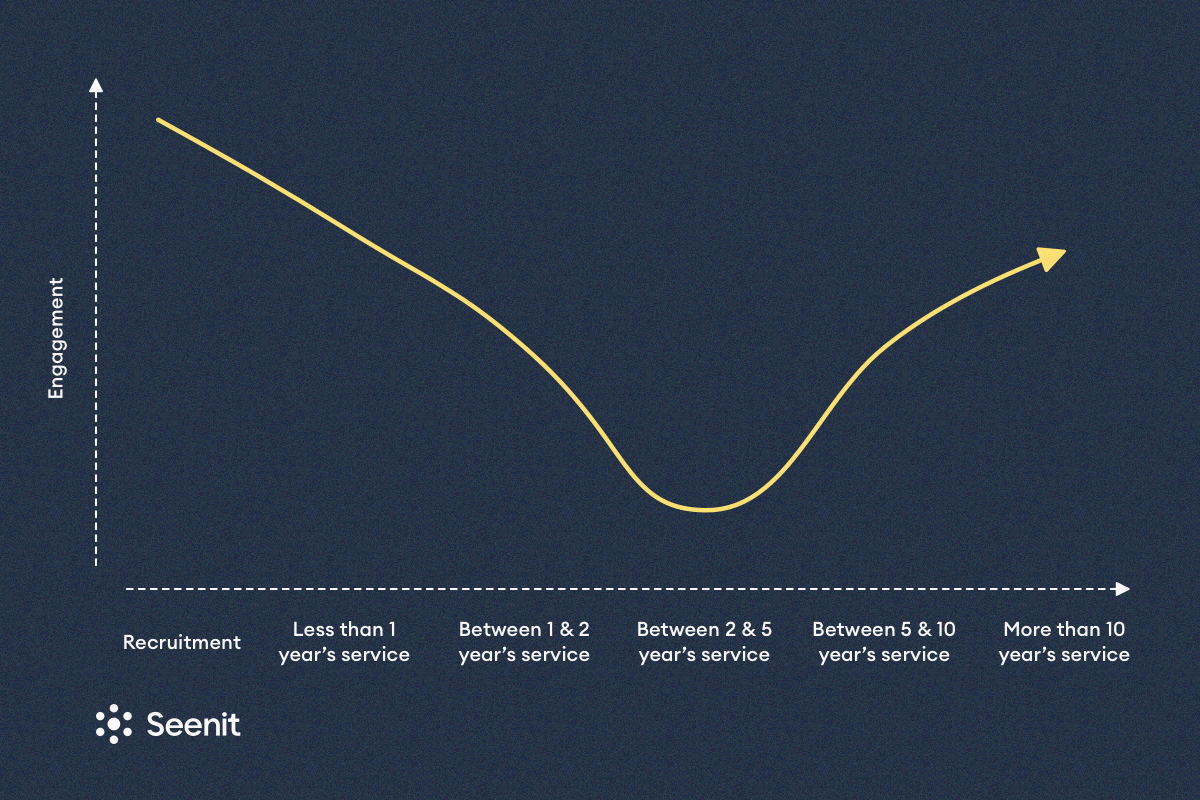
“I want companies and people to start thinking about preventing the disengagement triggers. That’s what I really want because prevention is better than caring later.”
Lucy Powell shared some stronger views.
“I’m going to be a little bit brutal here. The methods don’t matter. What matters is an organisation’s strategic commitment to get into the weeds and properly listen and engage in dialogue with its workforce.”
To focus on prevention, you must start from the beginning, when employees get onboarded. We already know that’s when employees are the most engaged.
An excellent place to start would be an onboarding strategy. The onboarding period allows employees to meet the team and learn what they need for their roles. It ensures new employees understand the company’s vision and culture and how their role fits. This will positively affect employee engagement, productivity, and all-around team performance, while also playing a vital role in a person’s decision to stay.
“Onboarding is the first time a new employee sees the culture. It’s the very first serious impact on engagement.”
And we know culture is key, as 73% of employees say being involved in a company’s culture keeps them engaged.
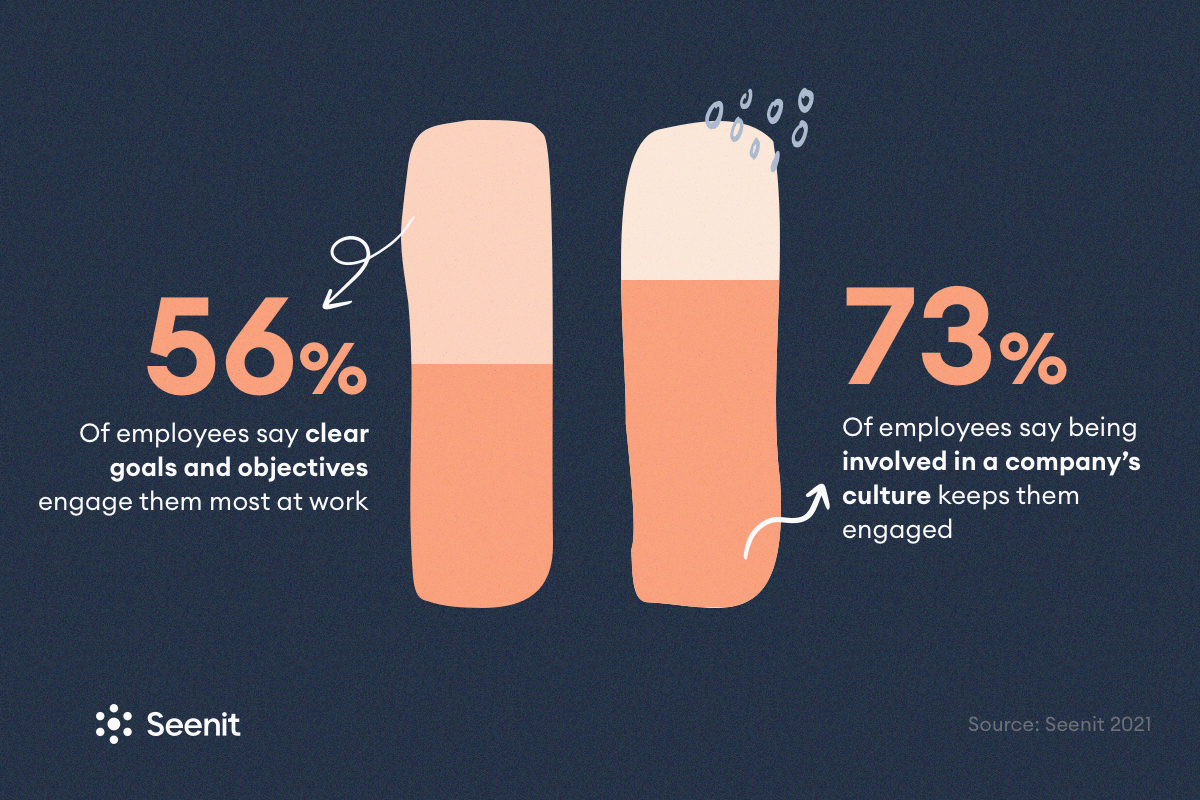
Once you’ve spent time on strategy and successfully onboarded employees, the next step is to work with the people, leaders, and managers who run teams.
“If someone manages people and has direct reports, they will be the biggest influencer of engagement or disengagement. You have to invest in the ability of your managers to communicate and engage with that team. There’s no other way around it.”
A lot is asked of managers, from handling their roles & responsibilities to coaching teams and ensuring their success. These stakeholders will make or break your company’s reputation, so leadership needs to be clear on engagement priorities and ensure it’s top of mind day in and day out.
We’re all familiar with pulse surveys, and though they could sometimes do with some improvements, they’re not going anywhere.
A common mistake is collecting lots of information but failing to make it actionable. Engagement surveys are crucial when they lead to a plan being implemented.
Following surveys with focus groups or 1-1 conversations can be highly beneficial. You’d be wasting time and effort on a survey alone as it’ll only give you trends. It might lead you to miss the bigger picture or hidden details. Follow-ups are necessary to know if your solutions are right or what’s driving the trends.
Video is the most engaging way to do just about anything, and we can’t ignore the impact of Employee-Generated Video.
The right amount of employee engagement can feed into your employer brand. You’ll have organic and authentic content that can amplify your brand.
Focusing on engagement alone is one thing, but some employees are happy as they are. They’re not going to become saboteurs and actively work against an organisation. Still, they might do less than you’d like.
To caveat that, you’re better off investing money upfront in tools that can benefit a broader cause. A vitamin, instead of a painkiller, if you will. With a tool like Seenit, 72% of employees say having the opportunity to have their voice heard keeps them engaged.
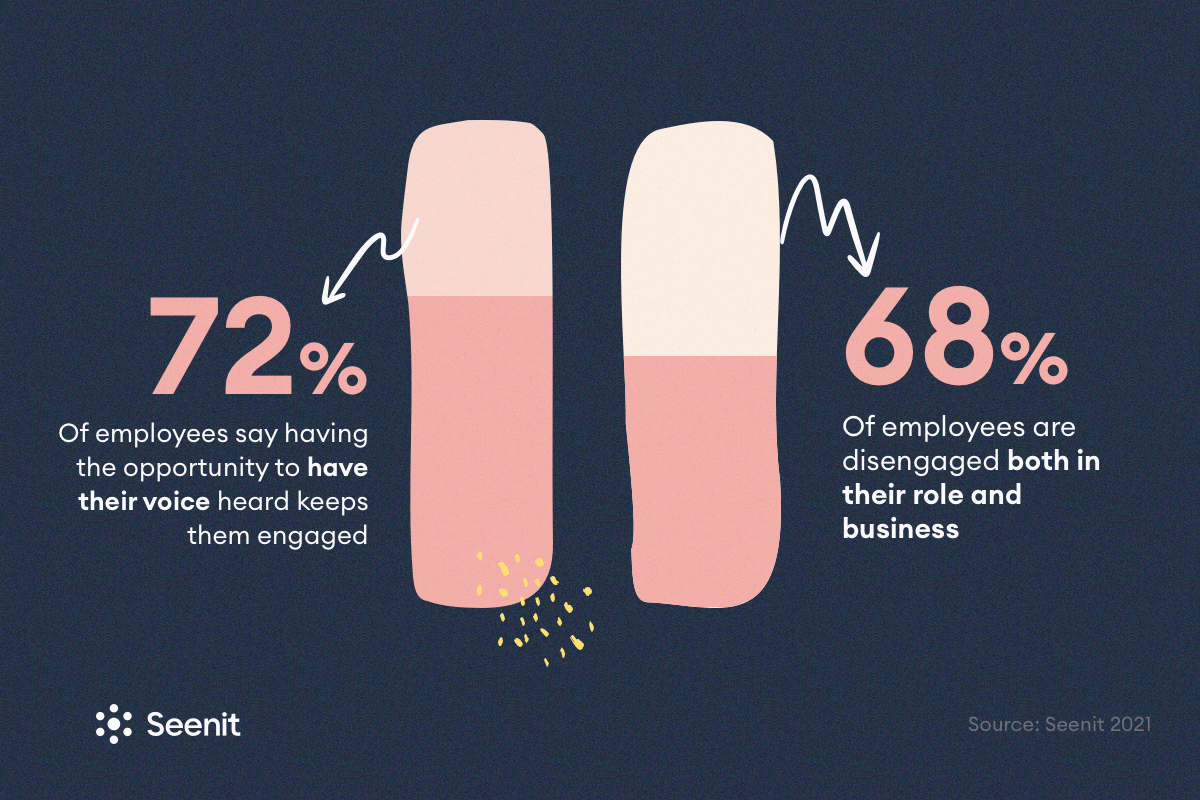
Many companies have already been affected by restructuring and budget cuts and have had to make tough decisions to stay afloat. Your business is all about your people; with that in mind, employee engagement should be at the forefront of strategy, long-term plans and everyday initiatives to ensure your business can continue to thrive.
Business professionals from all functions, from recruitment to employer brand and internal comms, must adapt and reframe their priorities. In the last few months, new challenges have popped up while old ones have been engrained deeper in day-to-day worries. Experts in the space are being kept up at night navigating a new hybrid world, growing DE&I concerns and phenomena such as quiet quitting.
Candidly, it’s time to get all hands on deck and think creatively with your teams to solve the many upcoming challenges 2023 has in store. What was once a ‘nice-to-have’ will make or break your employee’s experience and, by extension, your business’ success.
So, look around you. What can you do today to drive employee engagement? Why not start with video? Seenit reduces the cost and resources needed for video production by **80% compared to traditional methods. **
Want to learn more about how to do more with less when budgets get cut to continue driving engagement? Tune in to our webinar on Wednesday, January 25th, at 4:30PM BST.
Maasa Walker, Employer Brand Manager at Meta, ex-Microsoft employee, will discuss why employee storytelling will be business critical in 2023.
Seenit is the employee-generated video platform for businesses. We help companies like EE, Novartis, and Vodafone securely crowdsource content from their colleagues and edit it into videos that engage 8x more than traditional content. All with a tool that anyone can use in minutes, no video experience needed.
Seenit saves you time, money, and effort and is the flexible, scalable, and safe way to crowdsource and edit content from your colleagues, wherever they are. Seenit produced content is up to 20x faster to collect, reduces production spend by 70%, and increases video output by 9x.
Empower your colleagues to create engaging and authentic videos to attract talent, enhance your employer brand, and engage your colleagues with Seenit, the employee-generated video platform.
Search seenit.io for more.